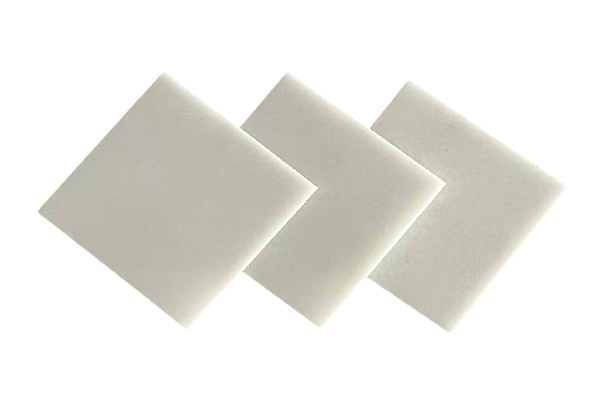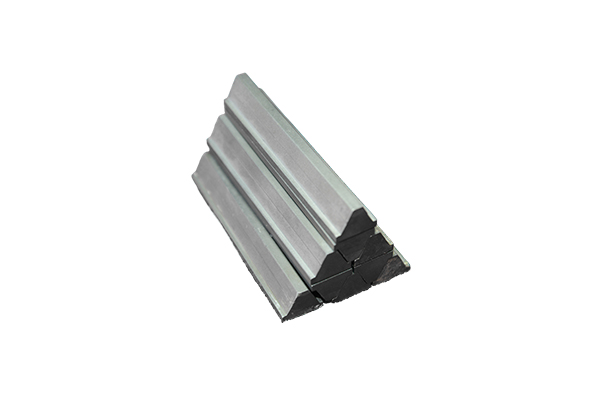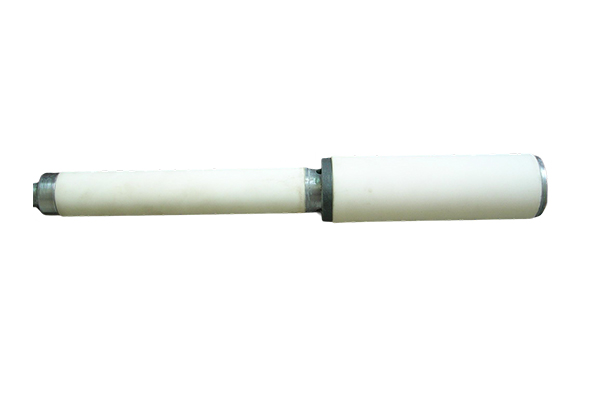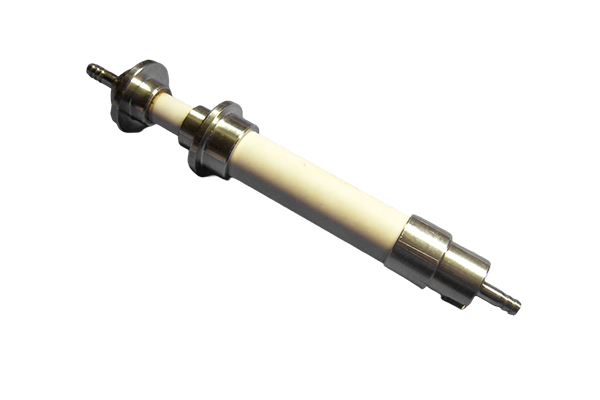What advanced production processes are used for aluminum nitride substrate to ensure high thermal conductivity and mechanical strength?
Release Time : 2025-04-21
As a high-performance ceramic substrate widely used in the modern electronics industry, aluminum nitride substrate plays an important role in power electronics, LED lighting, and semiconductor packaging. In order to ensure its high thermal conductivity and mechanical strength, manufacturers have made many considerations and optimizations in material selection and production processes.
First of all, aluminum nitride (AlN), as an excellent ceramic material, is widely used in high-power density devices due to its excellent thermal conductivity (usually above 170 W/mK) and good electrical insulation properties. However, to give full play to these advantages of aluminum nitride, a suitable production process must be adopted. Common production processes include hot pressing sintering and tape casting.
Hot pressing sintering is a commonly used method for preparing aluminum nitride substrate. This method places aluminum nitride powder in a mold and sinters it under high temperature and high pressure conditions, so that solid phase diffusion occurs between powder particles, thereby forming a dense ceramic body. Hot pressing sintering can not only significantly improve the density and mechanical strength of the substrate, but also effectively reduce the porosity and further improve the thermal conductivity. In addition, the sintering temperature and pressure can be precisely controlled during hot pressing to obtain the ideal microstructure and performance.
Tape casting is another important process, which is particularly suitable for preparing thin aluminum nitride substrates. Tape casting is a process that mixes aluminum nitride powder with organic solvents, binders, etc. into a slurry, then evenly coats the slurry on a carrier film, and finally forms a substrate after drying, degreasing, and sintering. This method can achieve high dimensional accuracy and flatness, and is particularly suitable for large-scale production and high-precision applications. Tape casting can also flexibly adjust the thickness and shape of the substrate to meet the needs of different users.
In addition to the above two main processes, some high-end products also combine other advanced technologies, such as plasma activated sintering (PAS) or spark plasma sintering (SPS). These technologies can achieve rapid sintering at lower temperatures, avoiding the problem of grain growth that may occur in traditional sintering processes, thereby maintaining the fine-grained structure and excellent performance of the material.
To ensure the performance of aluminum nitride substrates in actual applications, manufacturers will conduct a series of rigorous tests and verifications. From raw material inspection to finished product sampling testing, every link strictly implements the internationally accepted quality management system. For example, by conducting multiple experiments such as thermal conductivity testing, bending strength testing, and thermal expansion coefficient measurement on samples, we can fully understand the actual performance of the product and promptly discover potential problems for improvement. This not only improves the overall quality of the product, but also provides users with a reliable experience.
It is worth noting that in order to further improve the comprehensive performance of aluminum nitride substrates, many manufacturers will add metallization layers or other functional layers on the surface of the substrate. For example, depositing a layer of metal (such as copper, silver or gold) on the surface of the aluminum nitride substrate by sputtering or electroplating can not only improve welding performance, but also enhance heat dissipation. Some high-end products also adopt a multi-layer structure design to combine materials with different functions to achieve a synergistic effect of multiple functions.
Finally, in the entire production process, strict environmental standards are also an important part that cannot be ignored. Many manufacturers are committed to reducing the use of hazardous substances in the production process, such as heavy metals such as lead, mercury and cadmium, to ensure that products comply with relevant environmental regulations such as RoHS (Restriction of the Use of Certain Hazardous Substances Directive). In addition, the recyclability and low energy consumption design of aluminum nitride substrate have also become the focus of more and more manufacturers, promoting green manufacturing and sustainable development.
In summary, by adopting advanced hot pressing sintering, tape casting and other innovative processes, aluminum nitride substrate can provide excellent thermal conductivity and mechanical strength in various application scenarios. Whether in power electronics, LED lighting or semiconductor packaging, it is an ideal choice to ensure the efficient operation of equipment. With the advancement of technology and the application of new materials, we are expected to see more innovative products in the future to provide users with a more perfect user experience.
First of all, aluminum nitride (AlN), as an excellent ceramic material, is widely used in high-power density devices due to its excellent thermal conductivity (usually above 170 W/mK) and good electrical insulation properties. However, to give full play to these advantages of aluminum nitride, a suitable production process must be adopted. Common production processes include hot pressing sintering and tape casting.
Hot pressing sintering is a commonly used method for preparing aluminum nitride substrate. This method places aluminum nitride powder in a mold and sinters it under high temperature and high pressure conditions, so that solid phase diffusion occurs between powder particles, thereby forming a dense ceramic body. Hot pressing sintering can not only significantly improve the density and mechanical strength of the substrate, but also effectively reduce the porosity and further improve the thermal conductivity. In addition, the sintering temperature and pressure can be precisely controlled during hot pressing to obtain the ideal microstructure and performance.
Tape casting is another important process, which is particularly suitable for preparing thin aluminum nitride substrates. Tape casting is a process that mixes aluminum nitride powder with organic solvents, binders, etc. into a slurry, then evenly coats the slurry on a carrier film, and finally forms a substrate after drying, degreasing, and sintering. This method can achieve high dimensional accuracy and flatness, and is particularly suitable for large-scale production and high-precision applications. Tape casting can also flexibly adjust the thickness and shape of the substrate to meet the needs of different users.
In addition to the above two main processes, some high-end products also combine other advanced technologies, such as plasma activated sintering (PAS) or spark plasma sintering (SPS). These technologies can achieve rapid sintering at lower temperatures, avoiding the problem of grain growth that may occur in traditional sintering processes, thereby maintaining the fine-grained structure and excellent performance of the material.
To ensure the performance of aluminum nitride substrates in actual applications, manufacturers will conduct a series of rigorous tests and verifications. From raw material inspection to finished product sampling testing, every link strictly implements the internationally accepted quality management system. For example, by conducting multiple experiments such as thermal conductivity testing, bending strength testing, and thermal expansion coefficient measurement on samples, we can fully understand the actual performance of the product and promptly discover potential problems for improvement. This not only improves the overall quality of the product, but also provides users with a reliable experience.
It is worth noting that in order to further improve the comprehensive performance of aluminum nitride substrates, many manufacturers will add metallization layers or other functional layers on the surface of the substrate. For example, depositing a layer of metal (such as copper, silver or gold) on the surface of the aluminum nitride substrate by sputtering or electroplating can not only improve welding performance, but also enhance heat dissipation. Some high-end products also adopt a multi-layer structure design to combine materials with different functions to achieve a synergistic effect of multiple functions.
Finally, in the entire production process, strict environmental standards are also an important part that cannot be ignored. Many manufacturers are committed to reducing the use of hazardous substances in the production process, such as heavy metals such as lead, mercury and cadmium, to ensure that products comply with relevant environmental regulations such as RoHS (Restriction of the Use of Certain Hazardous Substances Directive). In addition, the recyclability and low energy consumption design of aluminum nitride substrate have also become the focus of more and more manufacturers, promoting green manufacturing and sustainable development.
In summary, by adopting advanced hot pressing sintering, tape casting and other innovative processes, aluminum nitride substrate can provide excellent thermal conductivity and mechanical strength in various application scenarios. Whether in power electronics, LED lighting or semiconductor packaging, it is an ideal choice to ensure the efficient operation of equipment. With the advancement of technology and the application of new materials, we are expected to see more innovative products in the future to provide users with a more perfect user experience.








